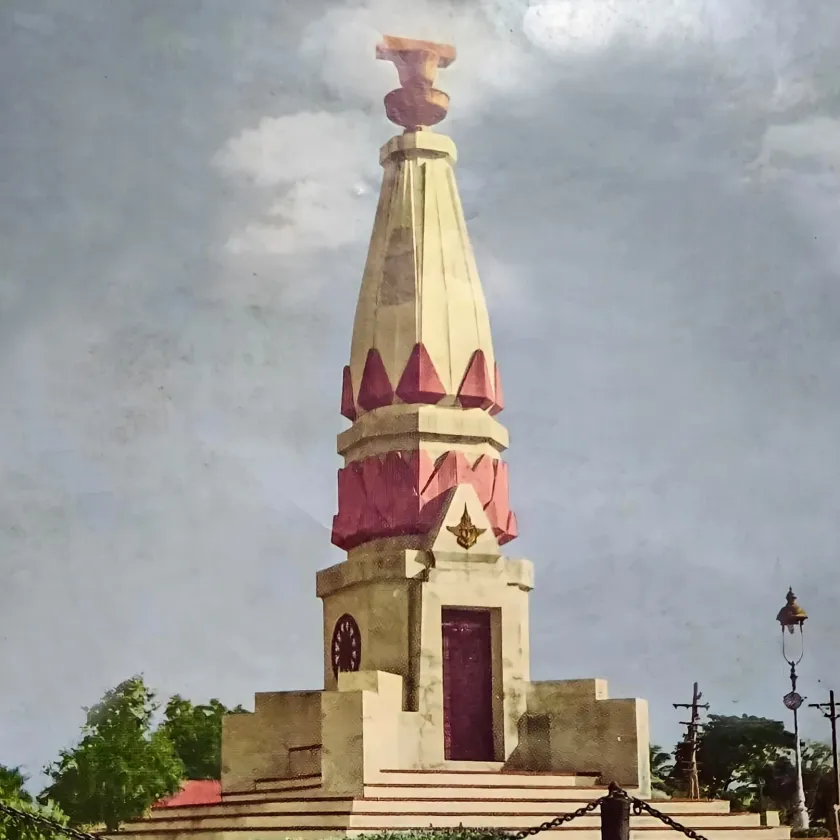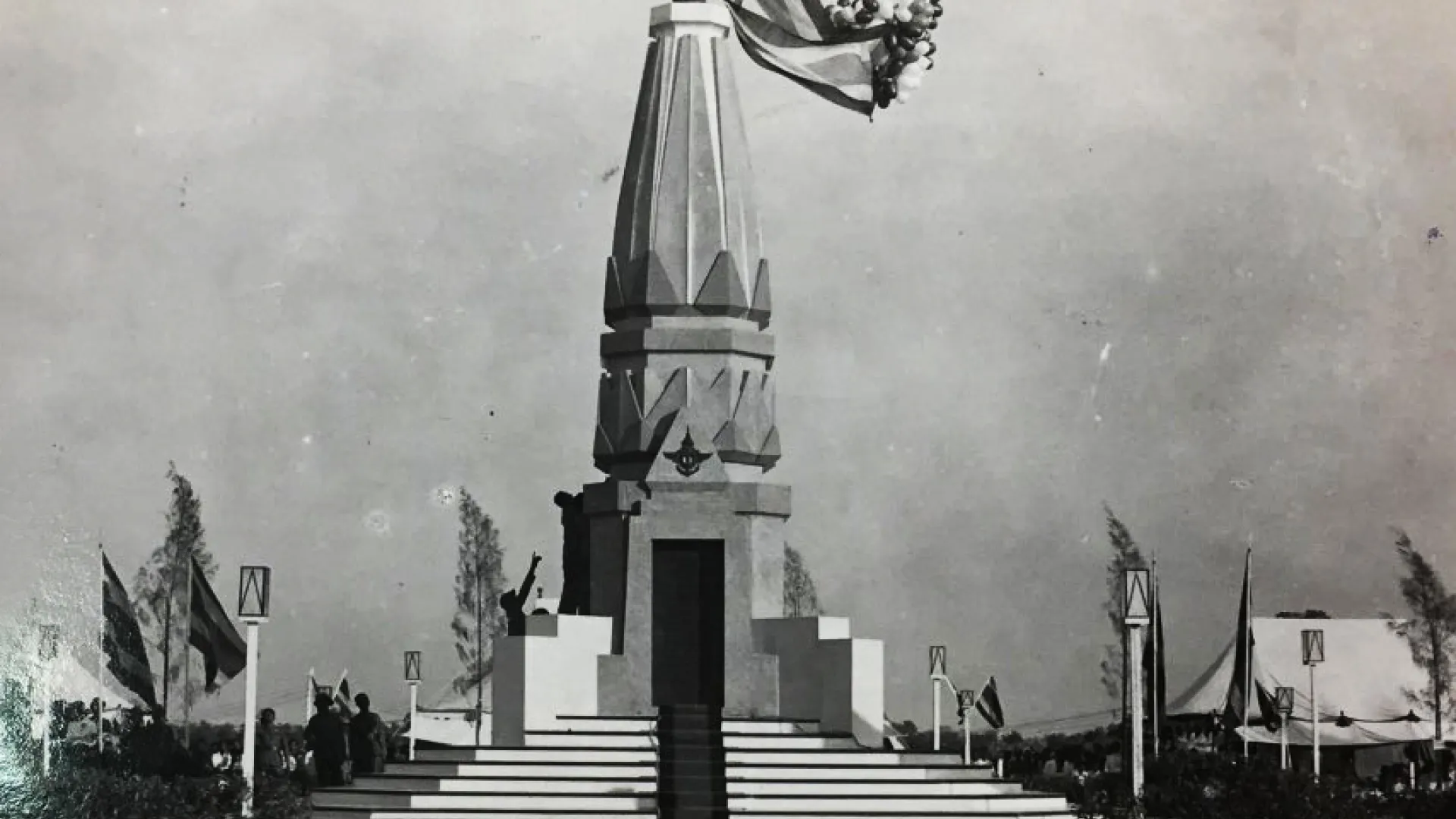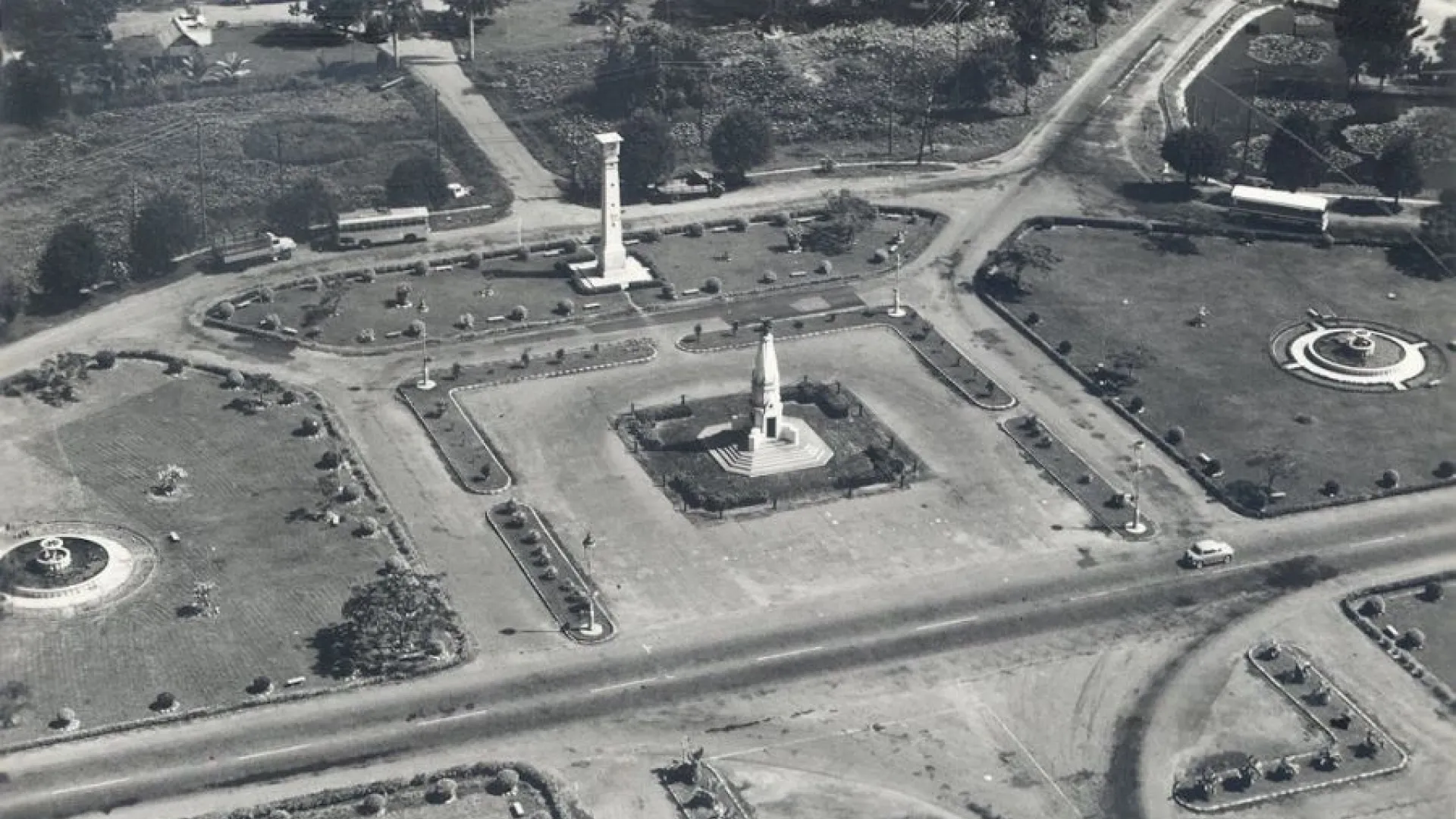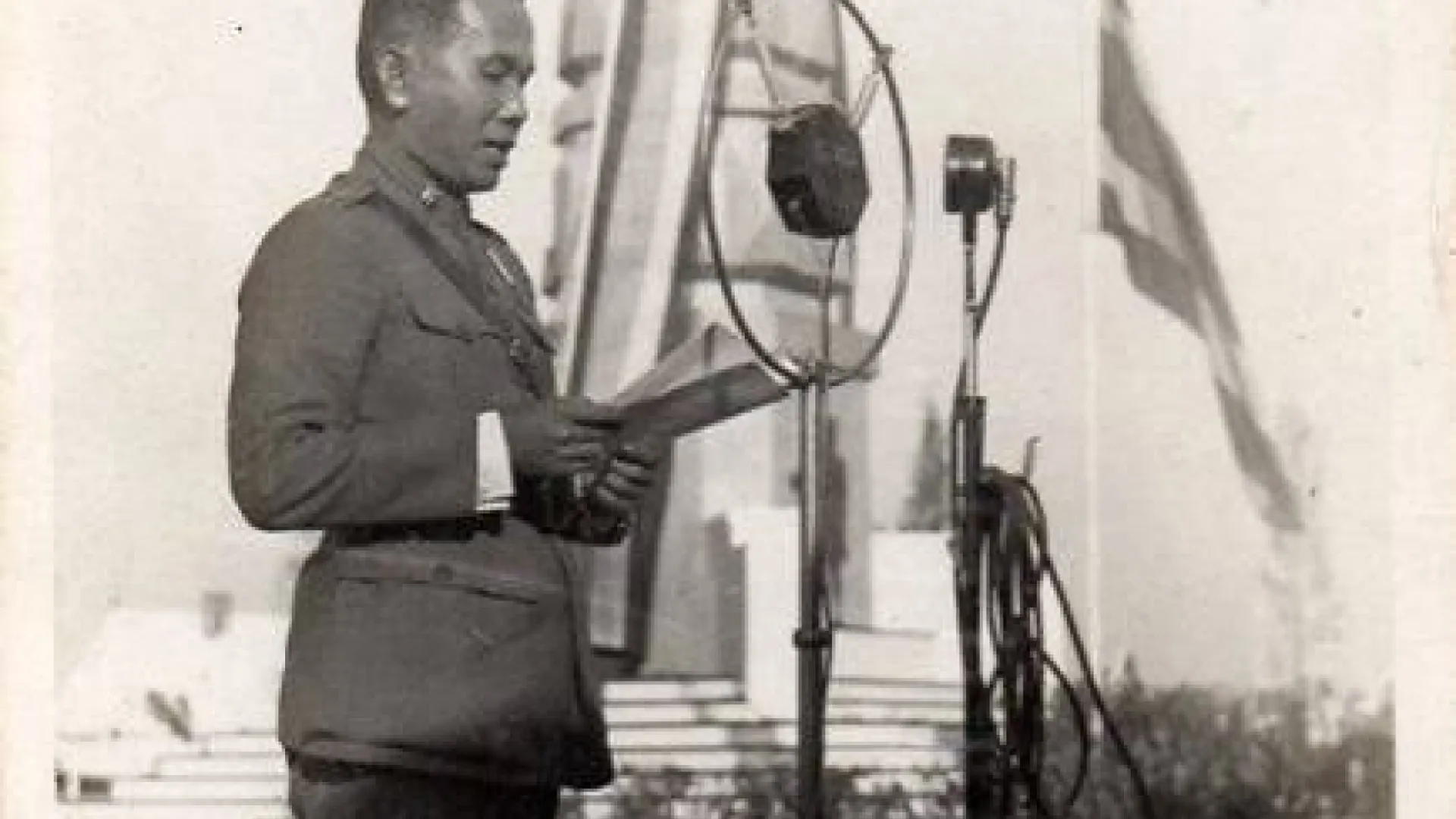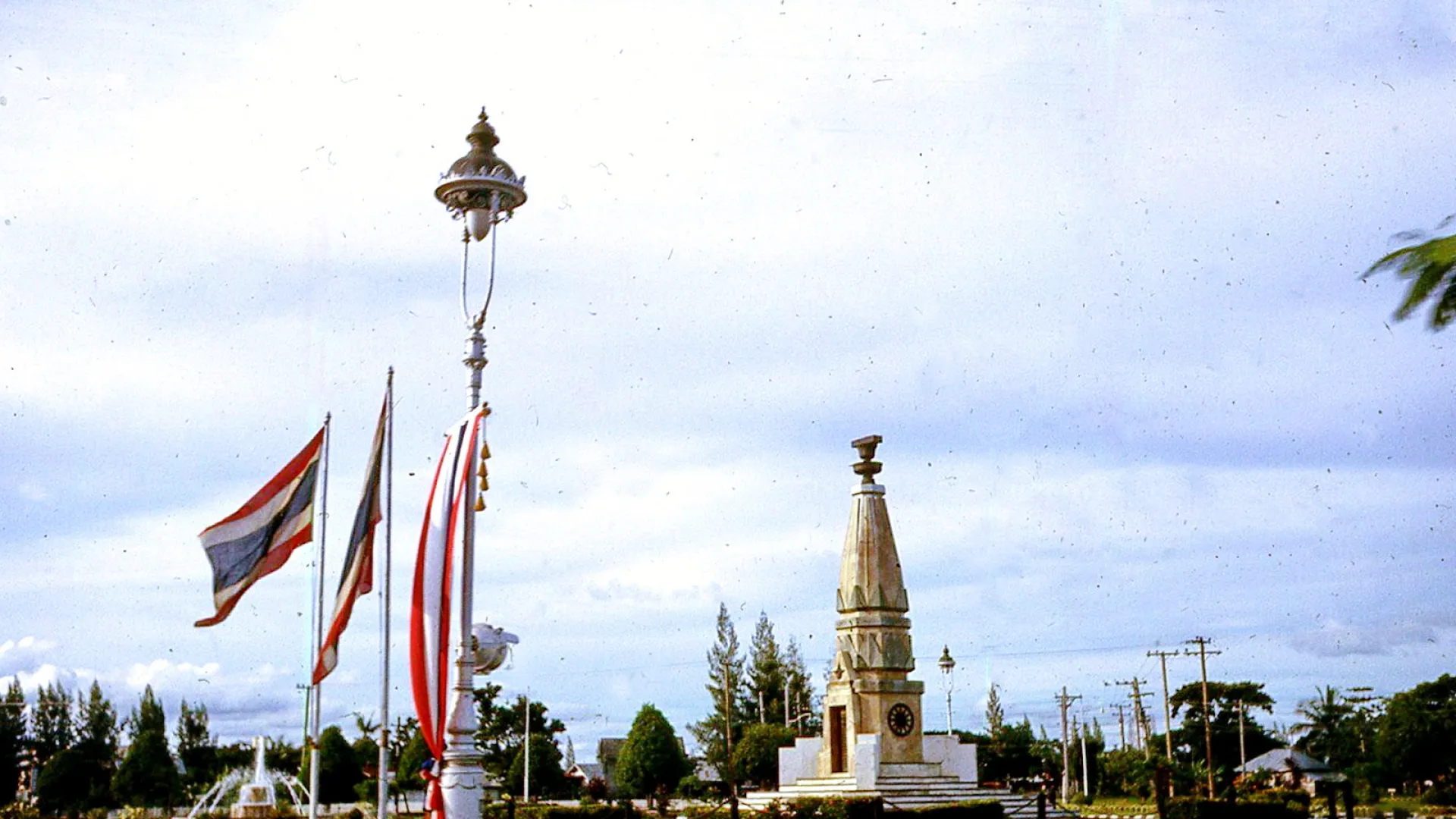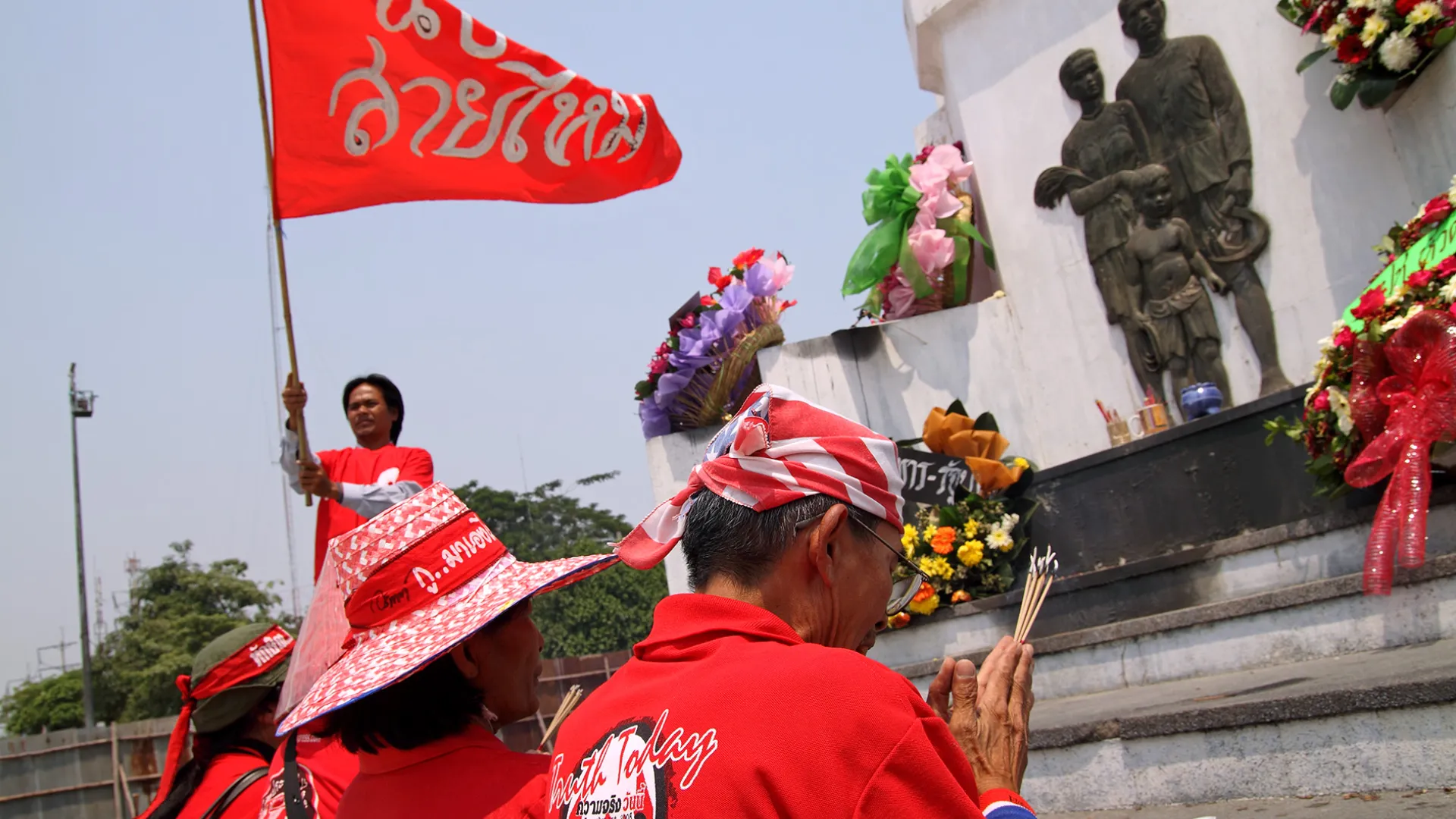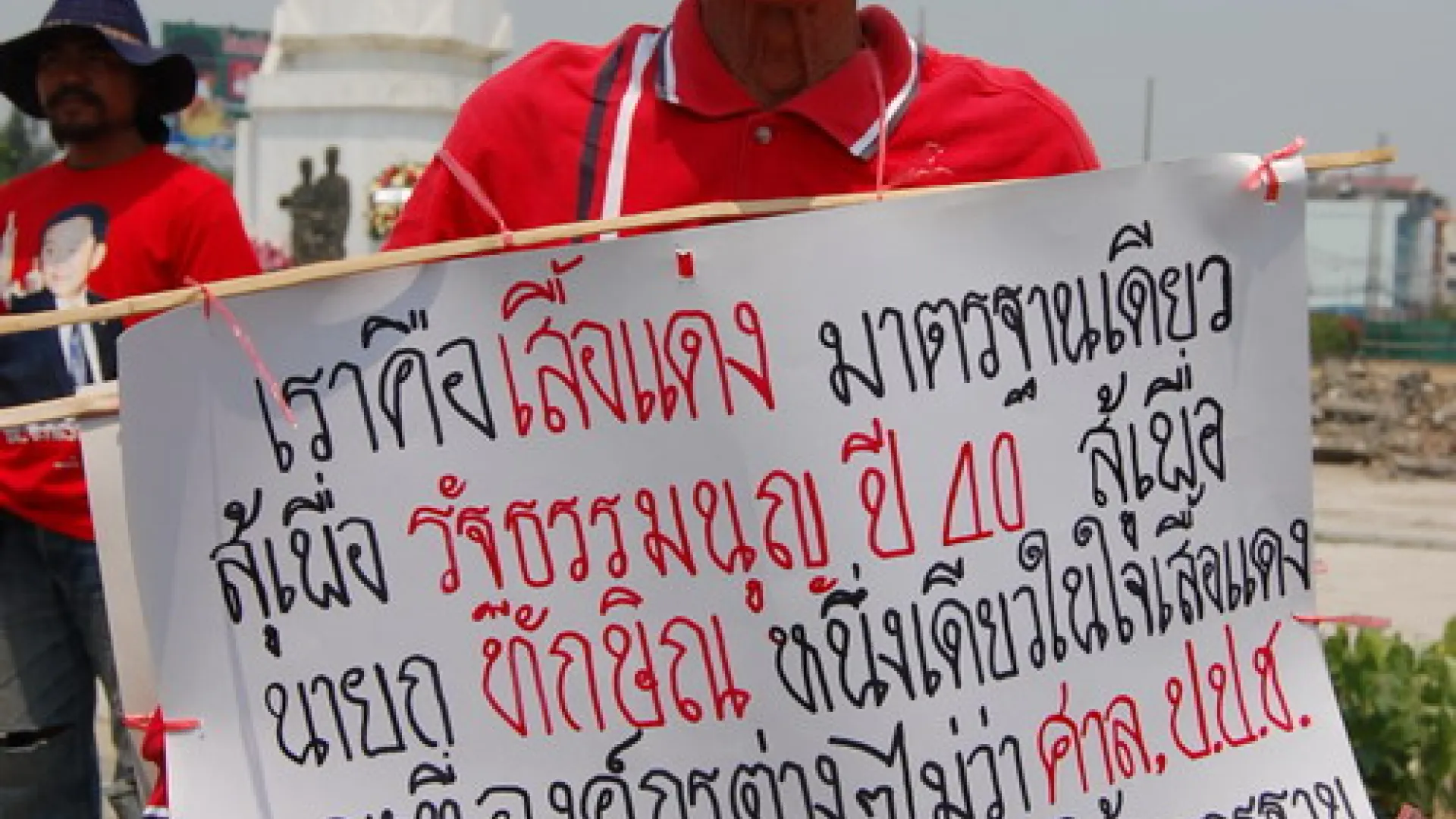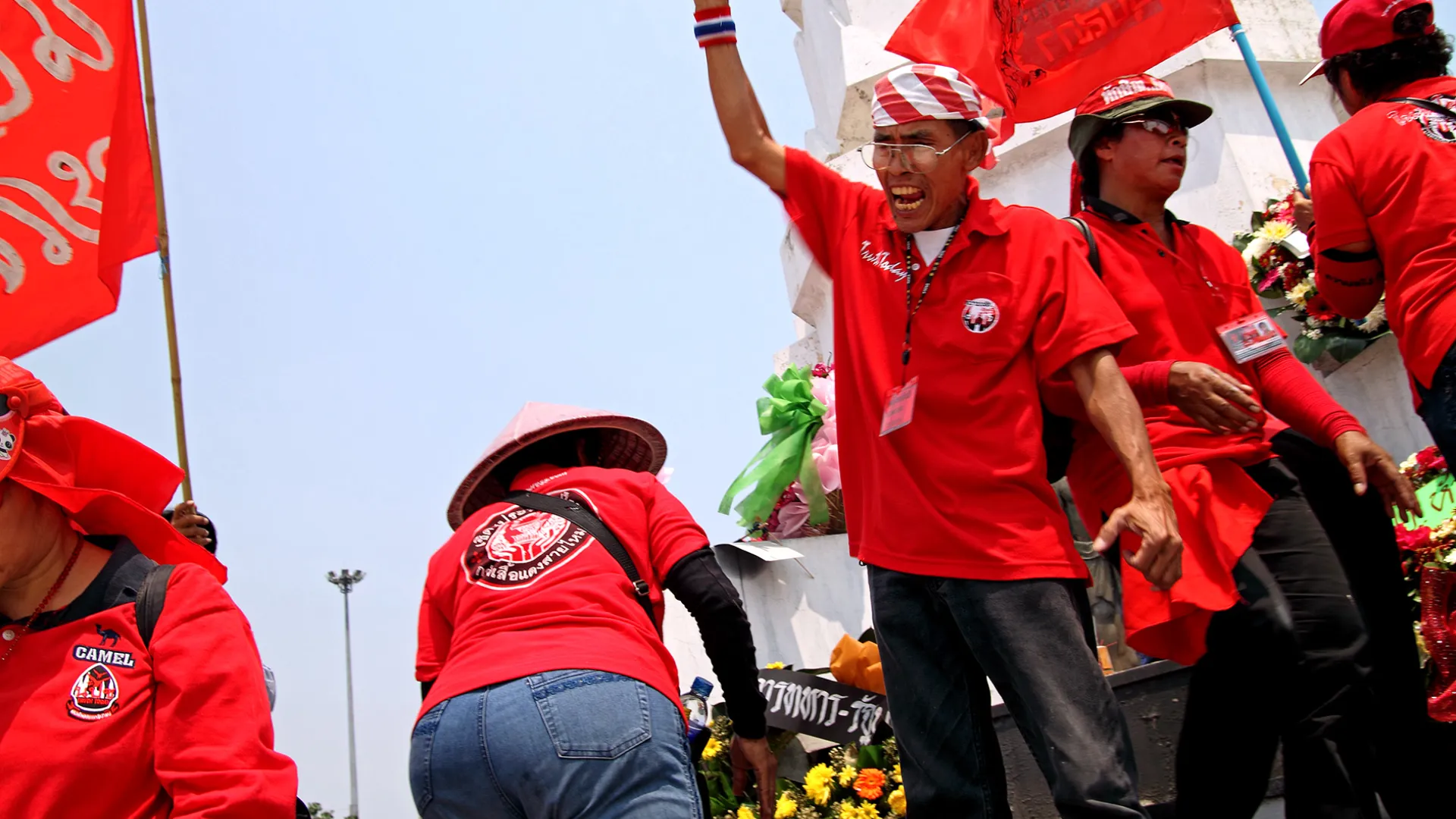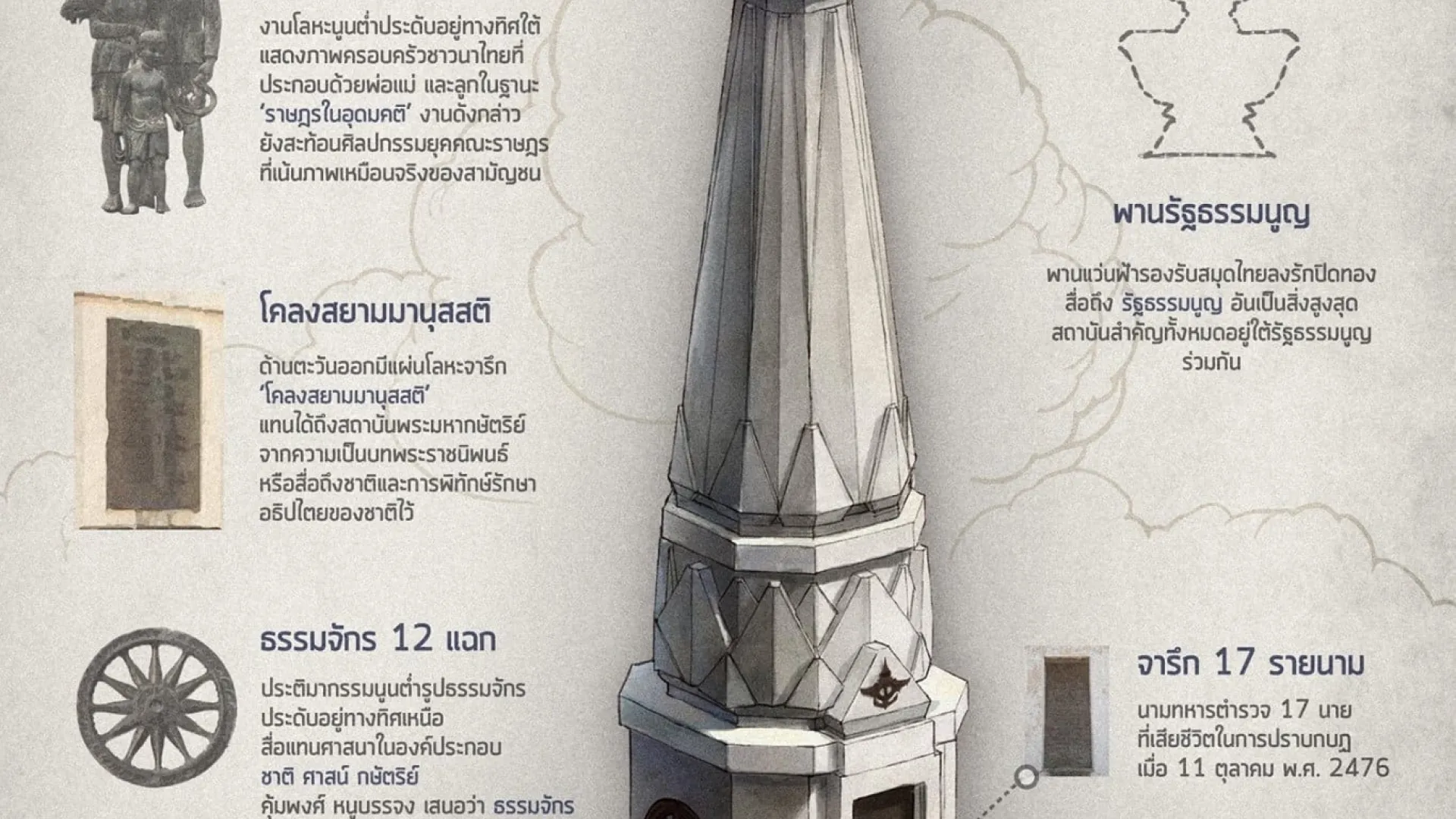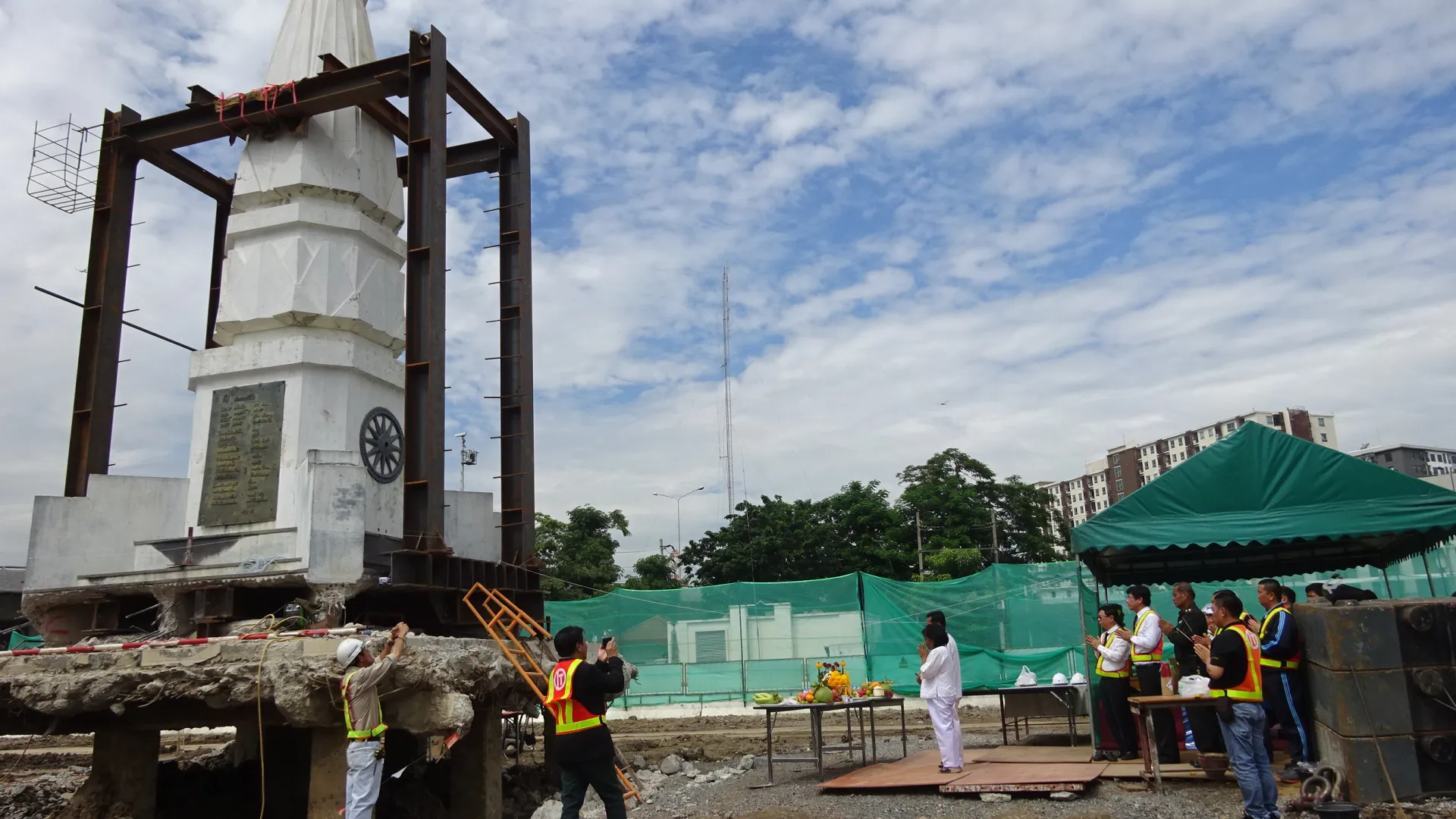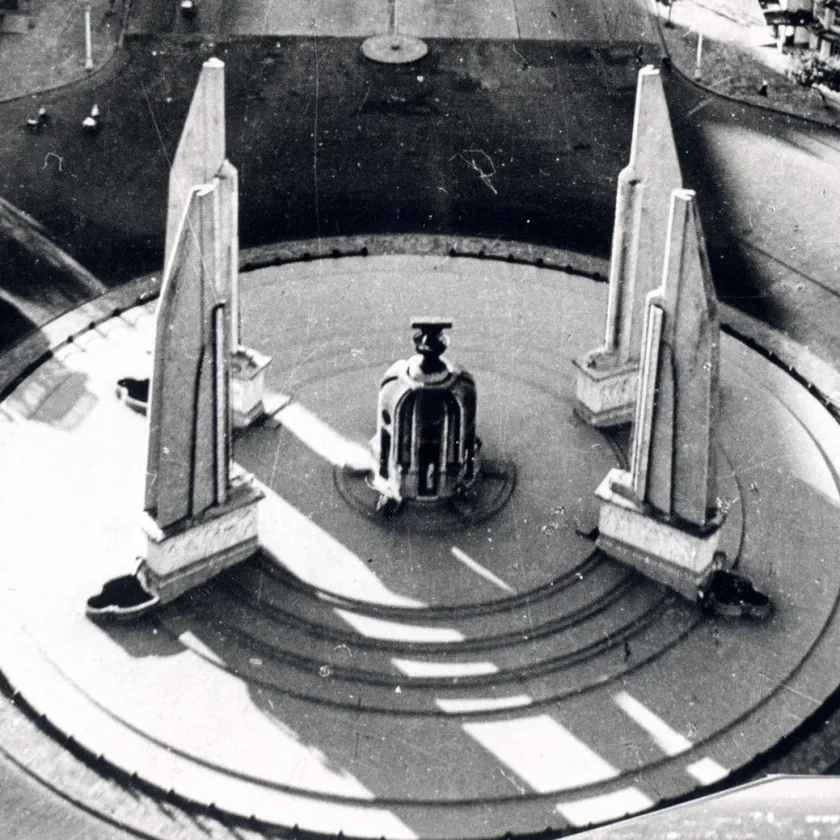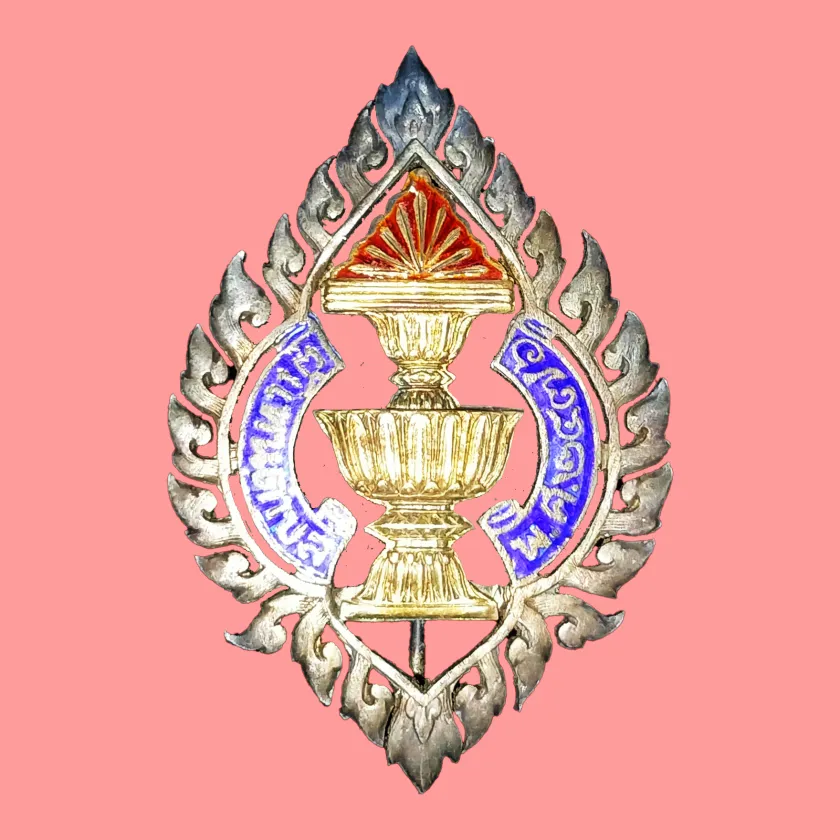The Boworadet Rebellion was a significant political movement following the Siamese Revolution of 1932. Led by Prince Boworadet Kridakorn, a faction opposing the new regime, known as Khana Ku Ban Ku Mueang ("Country's Rescue Party"), included both military personnel and civilians. This group seized control of Don Mueang, aiming to force the government led by Phraya Phahonphonphayuhasena to resign. In response, the government appointed Luang Phibunsongkhram to lead the suppression of the rebels. The clashes began at Bang Khen on October 12 and continued until October 16, 1933. Although the government successfully quelled the rebellion and defended the constitutional regime, it lost 17 soldiers and police officers in the conflict. These fallen soldiers and police officers were honored by the government as national heroes, with a grand cremation ceremony held at the central crematorium in Sanam Luang. Additionally, the People's Party government erected a monument at Lak Si to house the ashes of the 17 national heroes and commemorate the suppression of the Boworadet Rebellion.
The "Rebellion Suppression Monument," also known by various names such as the "17 Soldiers and Police Monument," "Lak Si Monument," and "Constitutional Defender Monument," commemorates the sacrifice of the heroes who fought to uphold the constitutional regime in October 1933. Construction of the monument began alongside the project to build a road connecting Bangkok with Don Mueang in late 1933. The Ministry of Defense assigned Lieutenant Colonel Luang Narumitrekhakan to design the monument, which features modern architecture of the People's Party era. The monument resembles a stupa for housing ashes according to Buddhist belief, standing on an octagonal concrete base with two tiers of lotus petals. The top of the lotus is adorned with the Constitution, symbolizing the defense of the constitution. The front wall of the monument (west side) has a metal plaque inscribed with the names of the 17 soldiers and police officers who died suppressing the rebellion. The south wall features a low-relief sculpture of a farming family, with the husband holding a sickle, the wife holding a sheaf of rice, and the child holding manila rope, symbolizing the farmer class as the backbone of the nation. The north wall displays a Dhammachakra (Wheel of Dharma) sculpture, representing national peace. The east wall has a metal plaque inscribed with the poem "Siamanussati" by King Rama VI, reminding Thais to love their country and promote unity. The monument was inaugurated on October 15, 1936, by Prince Aditya Dibabha, acting regent during the reign of King Rama VIII.
The Rebellion Suppression Monument served as a site for commemorative ceremonies honoring the military and police who defended the constitutional regime. The People's Party government organized a wreath-laying ceremony on October 14 each year. Additionally, during the Phibunsongkhram government, the area around the monument was expanded to accommodate ceremonies and enhance its grandeur. The area was developed into a new town with the construction of the Bang Khen District Office, a primary medical center, a primary school, a police station, and the Democracy Temple around the monument. These developments reflected the symbolic political significance of the Rebellion Suppression Monument in bringing progress to Bang Khen District. Although the monument gradually lost its national significance as the meaning of the monument was redefined after the anti-People’s Party forces gained political power following the 1947 coup, the monument remained important and relevant at the local level. It became a site for relaxation, local activities, and a symbol of Bang Khen District. The Rebellion Suppression Monument was reactivated as a political space after the September 19, 2006 coup, when Red Shirt protesters revived the memory of the People's Party and used the monument for political activities, including ceremonies to honor the People's Party and events marking the anniversaries of the Rebellion Suppression Monument.
After the May 22, 2014 coup, the military sought to diminish the political significance of the monument associated with the Red Shirts. Authorities closely monitored the area and detained activists attempting to use the monument for anti-coup activities on June 24, 2016. The monument was also relocated from the center of the Lak Si Circle to the western side of the circle due to the construction of a Green Line Skytrain station on the original site. However, the Rebellion Suppression Monument was dismantled and has been missing since the night of December 28, 2018. During the dismantling, police and military officers detained 10 people, including citizens and journalists, who were observing the process. The current status of the Rebellion Suppression Monument remains unknown, with responsible government agencies providing little information and remaining silent.
Photographs
Period 1 The Birth of Khana Ratsadon Objects1932-1947
Period 2 The Forgotten People's Party1947-2006
Period 3 The Second Rebirth of Khana Ratsadon2006-2014
Period 4 The Third Rebirth of Khana Ratsadon2014-Present
Video Clips
Coordinates
The Constitution Defender Monument used to be located in the vicinity of the present-day Bang Khen SkyTrain station. No one knows where it was moved to.
